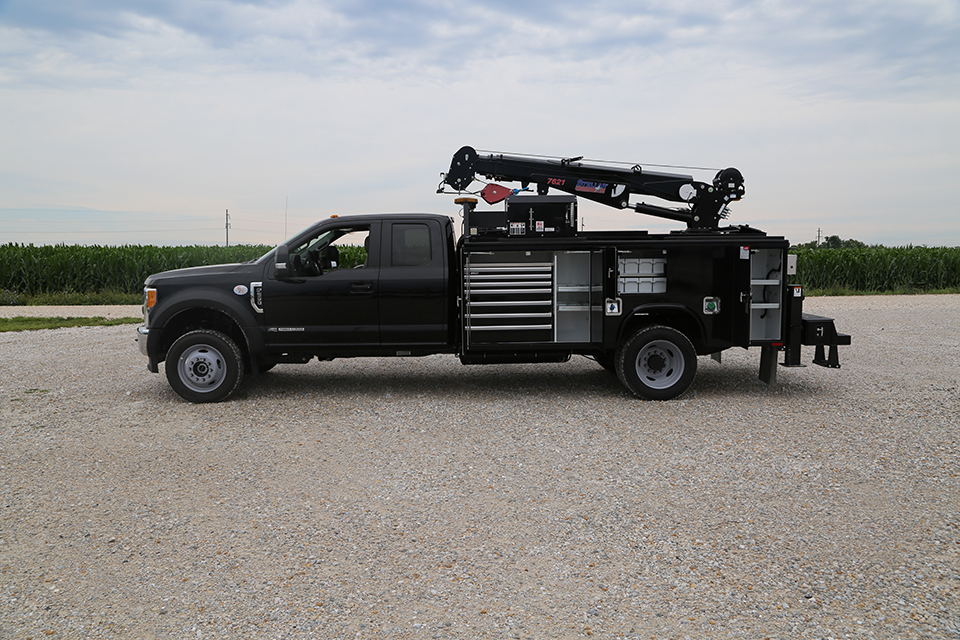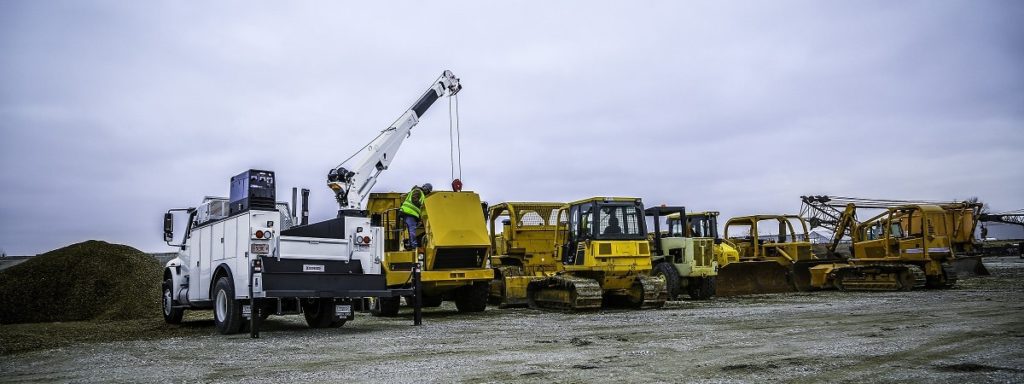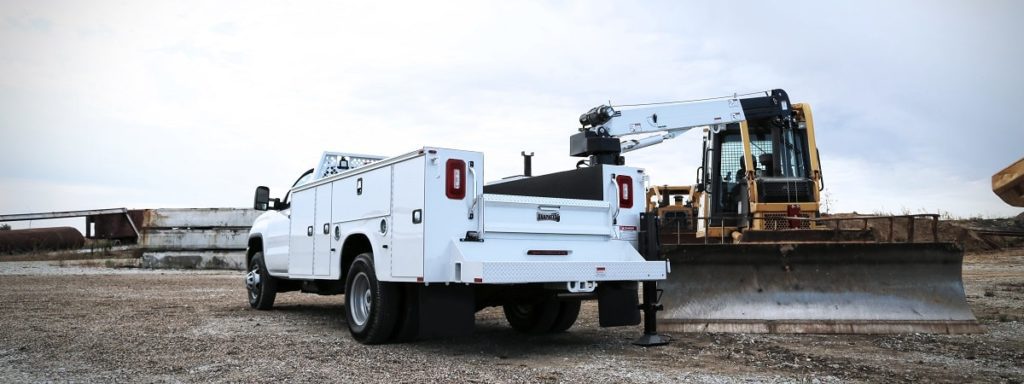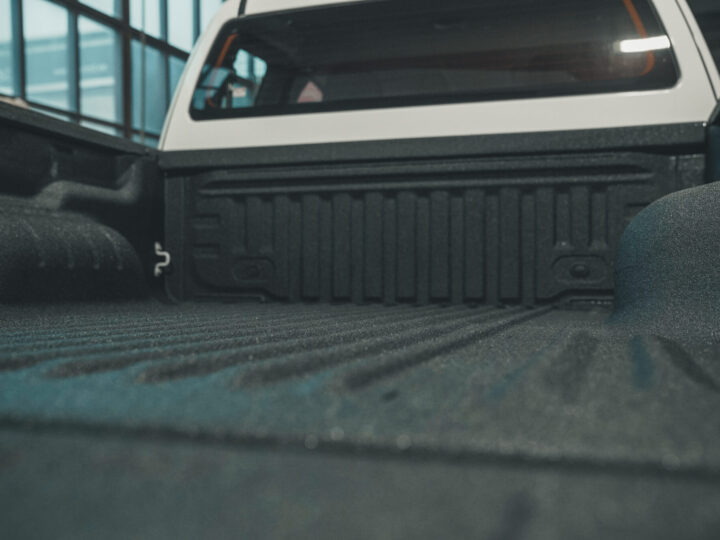
Getting a Service Truck Crane Installed on Your Vehicle
The demand for mobile cranes is on the rise worldwide, growing steadily along with the construction sector. Adding a crane to your service truck is a great way to diversify your business and generate new capabilities and income opportunities.
This article will provide you with information on the different types of service truck cranes available and their installation process to help get you started.
Before Installing Your New Truck Service Crane
First and foremost, it’s important to note that installing service truck cranes is complicated. The process is meticulous, including multiple steps with many moving parts and safety risks. The research for this item will take time and patience to ensure a smooth installation. Therefore, it is best that you know exactly what you need before you buy. Once you know what size and type of crane you need, it’s recommended for non-experienced individuals to plan on hiring an experienced, professional truck installation service to ensure the crane installation process goes smoothly and according to plan.
A professional truck installation service will be there to help every step of the way. Much of the planning for crane installations, including any special considerations or customizations, begins during the quotation process. During this process, the client and service company will discuss the client’s current needs and wants budget limitations, and timeline. The quote you obtain will likely include the timeline for crane purchase, assembly, and installation, among other details. For more information on what the installation process itself entails, see the “Installing a Service Truck Crane” section below.
What Type of Truck Crane Do I Need?
The service truck crane installation process first requires making sure that your truck body is capable of safely handling a crane. You should be aware of your truck’s payload capacity and the crane’s future applications, as well as the crane’s control style, maintenance. Local and state safety regulations can also dictate size, shape, and accessibility to certain crane items.
In addition to size and regulation limitations, when determining which crane is best for your truck, there are two important things that you’ll want to consider: how often do you plan to use the crane and how much lift capacity you need. Each crane is made for specific jobs and they do best when used correctly. Here are some crane options as well as their uses:
- Electric cranes – If your business has limited lifting needs, a lighter-duty electric crane might be best for you. These cranes are more affordable and usually lift no greater than three tons. One plus to this addition is that the truck does not have to be running for the user to operate the machinery.
- Hydraulic telescopic cranes – For more heavy-duty lifting, a hydraulic crane might be needed. These cranes lift over 6,000lbs and are the common choice for mechanics. Most lift capacities for hydraulic cranes top out around 14,000lbs.
- Articulating cranes – For maximum-duty lifting, you’ll need a “knuckle-boom” or articulating crane. These types of cranes come in an array of sizes with just as many lifting and moving capabilities.
The type of crane you choose will impact not only your business’ productivity, but also your safety, so it’s best to consult with a professional company and ensure you’re making an informed decision.
To further explore types of service body cranes and which is best for you, check out our article “Know Your Options: Service Body Crane” or contact our team for assistance.
Work Truck Crane Placement
Where you place your new truck crane is just as important as the size and shape. The best place to mount your new crane depends largely on how and where you intend to use it. Customers and clients should think about all the possible situations and terrains they might need to tackle with their truck service crane. Understanding necessary access points and crane reach are paramount in deciding where to mount your new crane.
Most commonly, you’ll find a mounted crane at the back of any truck. This placement tends to make the loading and unloading process easier with the mechanical arm in the rear middle of the bed. Some customers may have to make some enhancements to the body of the vehicle itself, like installing additional axles, to support the crane in this position due to the possible decrease in drivability and safety. If you plan on loading more often from the sides of the vehicle instead of the rear, it may be more beneficial to place the crane in the center of the truck bed but more towards the cab.
Controlling and Maintaining Your Truck Bed Crane
The list of deciding factors continues as crane placement also depends on the control style and mechanical maintenance of the crane itself. There are various crane operating styles available and each comes with its own set of benefits and downfalls. A remote-controlled crane can increase visibility but ultimately depends on a battery and a radio frequency to operate. A top-seat-operated unit may be more reliable, controlled, and comfortable, but it provides less visibility as to what’s going on on the ground.
No matter what crane you invest in, the maintenance will be pricey. Daily quality assurance checks will help mitigate unruly machinery and keep your business moving all day long. Tentative crane owners should also research common flaws in the cranes they are comparing before purchase, this way they can anticipate issues before they become unhappy surprises. OSHA does require that all active cranes be inspected once a year at the minimum so this cost can be attributed to the maintenance budget ahead of time. The best choice would be to find an efficient crane that has yearly maintenance costs within your budget.
Installing a Service Truck Crane
When installing a new crane, some customers are able to pull in and get the party started, while other customers are not so lucky. Some trucks intrinsically are not made to hold a crane but with some foundational upgrades, the crane installation can begin. If you are unsure of whether your truck can withstand the weight and use of a crane the installation team will either help you select a crane that works for your truck as-is, or recommend reinforcing your existing truck configuration, if possible. Reinforcing the truck bed or body will minimize damage to your vehicle down the line.
Once the truck is configured and reinforced properly, the crane can be mounted and wired onto the truck body. A series of diligent tests will be done to ensure the crane is properly-mounted, in accordance with safety standards. This is a crucial step as crane accidents can cause serious damage, injury, and even death. After the OK from the installation team, we are ready to lift!
Truck Crane Accessories
Even though your new truck crane is ready to rock and roll, there are still a few accessories left to pick up. Each industry has created its own line of crane accessories for its type of dirty job and they are extensive. Whether you’re scooping, pushing, pulling, lifting, dumping, pumping, dragging, or dropping, there is a piece of equipment made specifically for your needs.
The following list is not all-inclusive but it does give consumers a small look into the collection of available crane accessories:
- Rotators
- Pallet Forks
- Brick Stack Grapples
- Universal Forks
- Clamshell Buckets
- Container Discharge Units
- Earth Drills / Augers
- Hydraulic Hooks
- Barrier Lifters and more!
Ready for Your New Truck Crane?
If you are ready to start the crane selection and installation process, reach out to us and request a free service truck crane quote. Our Custom Truck Equipment Sales and Installation Department will walk you through your many options, important safety considerations and provide you with a detailed timeline and process for installation. You can rest easy knowing that our installers have over 75 years of combined experience to make certain that your crane is expertly installed. We look forward to hearing from you!







